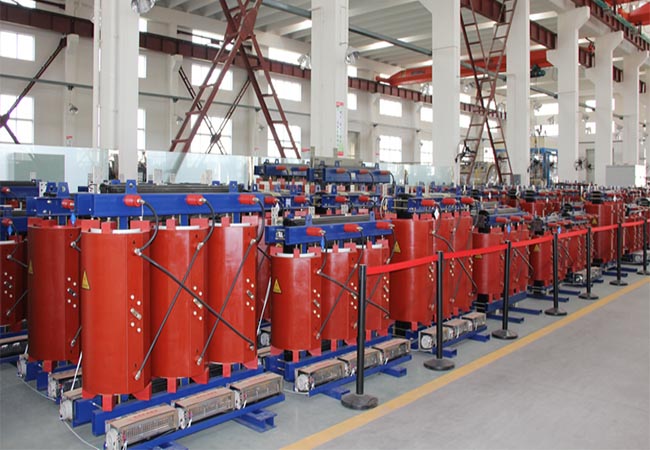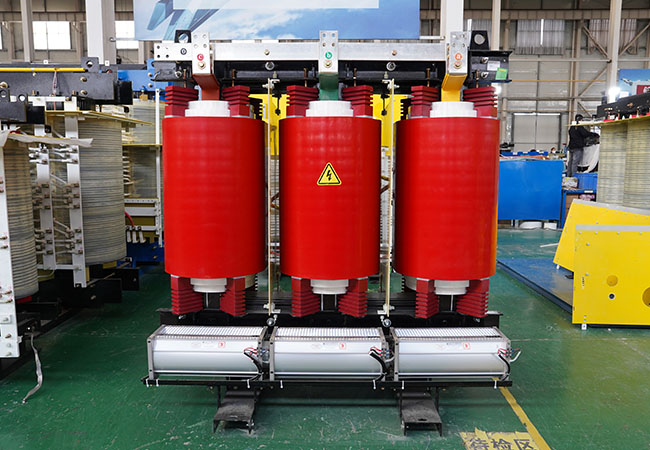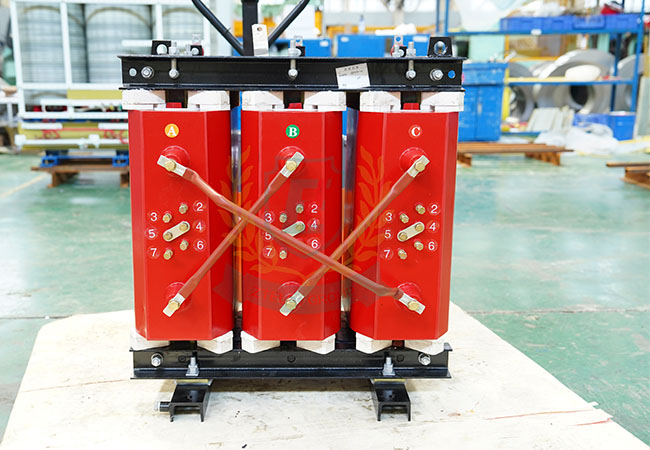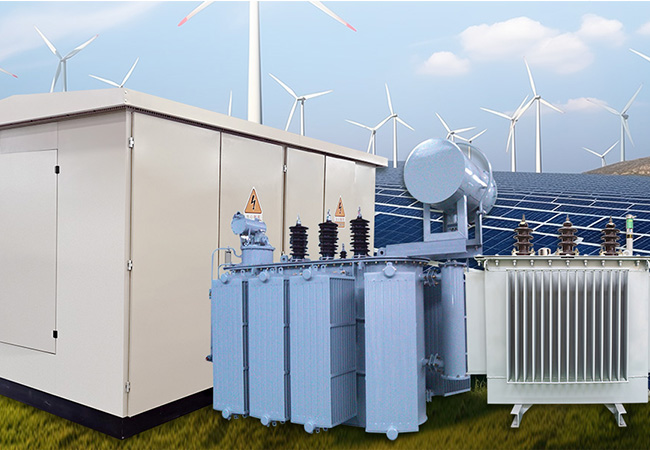Dry-type transformer: common causes of failure and measures
06-12 2025 | By:
Dry-type transformer: common causes of failure and measures
1. Abnormal rise in transformer temperature
The abnormal operation of dry-type transformers is mainly manifested in temperature and noise.
If the temperature is abnormally high, the specific treatment measures and steps are as follows:
1. Check whether the thermostat and thermometer are malfunctioning;
2. Check whether the blowing device and indoor ventilation are normal;
3. Check the load of the transformer and the insertion of the thermostat probe. Eliminate the failure of the thermostat and the blowing device. Under normal load conditions, the temperature continues to rise. It should be confirmed that there is a fault inside the transformer. The operation should be stopped and repaired.
1. Abnormal rise in transformer temperature
The abnormal operation of dry-type transformers is mainly manifested in temperature and noise.
If the temperature is abnormally high, the specific treatment measures and steps are as follows:
1. Check whether the thermostat and thermometer are malfunctioning;
2. Check whether the blowing device and indoor ventilation are normal;
3. Check the load of the transformer and the insertion of the thermostat probe. Eliminate the failure of the thermostat and the blowing device. Under normal load conditions, the temperature continues to rise. It should be confirmed that there is a fault inside the transformer. The operation should be stopped and repaired.
3. Low insulation resistance of the core to the ground
It is mainly due to the high humidity of the ambient air, and the dry-type transformer is damp, resulting in low insulation resistance.
Solution:
Place the iodine tungsten lamp under the low-voltage coil for continuous baking for 12 hours, including the core, high and low voltage coils. As long as the insulation resistance is low due to moisture, the insulation resistance value will be increased accordingly.
4. The insulation resistance of the core to the ground is zero
It means that the real connection between the metals may be due to burrs, metal wires, etc., which are brought into the core by paint, and the two ends are overlapped between the core and the clamp; the insulation of the base is damaged, causing the core to be connected to the base; metal objects fall into the low-voltage coil, causing the pull plate to be connected to the core.
Solution:
Use a lead wire to poke down along the channel between the core levels of the low-voltage coil. After confirming that there are no foreign objects, check the insulation of the base.
5. What should be paid attention to when sending power on site?
Generally, the power supply bureau sends power 5 times, and there are also 3 times. Before sending power, check the tightening of the bolts and whether there are metal foreign objects on the core; whether the insulation distance meets the power transmission standards; whether the electrical function is running normally; whether the connection is correct; whether the insulation of each component meets the power transmission standards; check whether there is condensation on the body; check whether there are holes in the shell that allow small animals to enter (especially the cable entry part); whether there is a discharge sound when sending power.
6. When the power is supplied, the shell and the grounding plate are discharged
It means that the conduction between the shell (aluminum alloy) plates is not good enough, which is a poor grounding.
Solution:
Use a 2500MΩ megger to break down the plate insulation or scrape off the paint film at each connection part of the shell and connect it to the ground with a copper wire.
7. Why is there a discharge sound when the handover test is done at the power frequency withstand voltage?
There are several possibilities. The pull plate is positioned at the tightening position of the clamp to discharge. You can use a gun to shoot here to make the pull plate and the clamp conduct electricity well; the pad creepage, especially high-voltage products (35kV) have produced this phenomenon, and the pad needs to be strengthened. The insulation treatment; the high-voltage cable and the connection point are virtual or the insulation distance with the tapping plate and the corner connection pipe is close, which will also produce a discharge sound. It is necessary to increase the insulation distance, re-tighten the bolts, and check whether there are dust particles on the inner wall of the high-voltage coil. Due to the moisture absorption of the particles, the insulation may be reduced, resulting in discharge.
8. Common faults in the operation of the thermostat
Common faults and treatment methods of the temperature controller during operation are shown in the following table:
9. Common faults in the operation of the fan
Common faults and treatment methods of the fan during operation are shown in the following table:
10. DC resistance unbalance rate exceeds the standard
When the user is doing the handover test, the tap bolts are loose or the test method is problematic, which will cause the DC resistance unbalance rate to exceed the standard.
Inspection items:
1) Whether there is resin in each tap;
2) Whether the bolt connection is tight, especially the low-voltage copper busbar connection bolts;
3) Whether there is paint or other foreign matter on the contact surface, if there is sandpaper, polish the joint contact surface smooth.
11. Abnormal travel switch
The travel switch is a device to protect the operator when the transformer is energized. If the transformer is energized, when any shell door is opened, the contacts of its travel switch should be closed immediately, so that the alarm circuit is connected and the alarm is alarmed.
Common faults:
No alarm after opening the door, and still alarm after closing the door.
Possible causes:
Poor connection or fixation of the travel switch or travel switch failure.
Solution:
1) Check the circuit and terminal to ensure good contact.
2) Replace the travel switch.
3) Check and tighten the positioning bolts.
12. Burned corner connection pipe
Carefully check the burnt black part of the high-voltage coil, and scrape off the blackest part with a knife or iron sheet. If the carbon black is removed and red is exposed, it means that the insulation inside the coil is not damaged and the coil is mostly good. Determine whether the coil is short-circuited by measuring the transformation ratio. If the test transformation ratio is normal, it means that the fault is caused by arcing caused by external short circuit and the corner pipe is burned.
You may also find these interesting:






